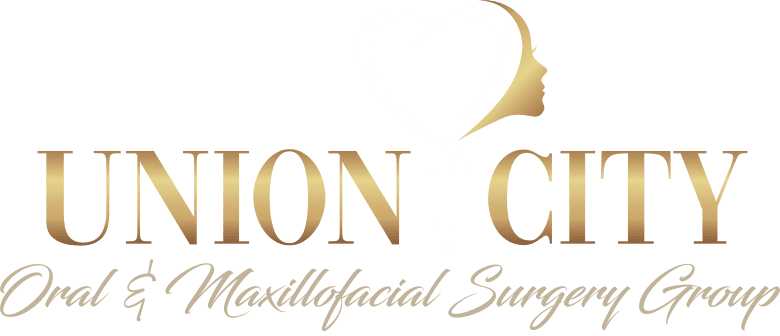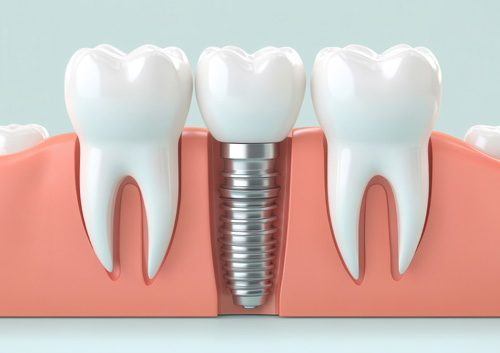Deciding to get dental implants is a significant step toward restoring your smile and oral function after tooth loss. Once the implant procedure is complete, your body begins a remarkable healing process that ultimately creates a strong bond between the implant and your jawbone. This biological process, called osseointegration, typically takes several months to complete and progresses through distinct stages. Understanding what happens during each phase of healing can help you better manage expectations and properly care for your new implants.
At Union City Oral Surgery Group, we guide patients through every step of the implant journey, from initial consultation to complete recovery. Our oral surgeons have extensive experience with dental implant procedures and provide detailed aftercare instructions tailored to each patient’s specific needs. With proper care and patience during the healing process, dental implants can provide a lifetime of comfortable, functional, and natural-looking tooth replacement.
The First Week After Implant Surgery
The initial healing stage begins immediately after surgery and focuses on soft tissue recovery around the implant site. During the first 24-48 hours, you’ll likely experience some bleeding, swelling, and discomfort as your body responds to the surgical procedure. These symptoms are normal and can be managed with prescribed pain medications, cold compresses, and rest. A protective blood clot forms at the implant site, which is crucial for proper healing, so it’s important to avoid activities that might dislodge it, such as vigorous rinsing, drinking through straws, or smoking.
By days 3-7, swelling typically peaks and then begins to subside. The gum tissue starts to heal around the implant site, and most patients can return to normal activities while still avoiding strenuous exercise. During this first week, your diet should consist of soft foods that require minimal chewing, such as yogurt, smoothies, mashed potatoes, and pasta. Proper nutrition supports healing, so focus on protein-rich foods and stay well-hydrated. Maintaining impeccable oral hygiene is essential, but you’ll need to clean very gently around the surgical site, following your surgeon’s specific instructions.
Weeks 2-4: Initial Bone Integration
By the second week, most of the initial discomfort and swelling should have significantly decreased. The soft tissue healing continues as the gums further adapt around the implant, and your body begins the early stages of osseointegration. During this phase, osteoblasts (bone-forming cells) begin to deposit new bone tissue around the implant surface. While this process isn’t visible or noticeable to you, it’s a critical foundation for the implant’s long-term stability.
Your diet can gradually expand to include softer solid foods as comfort allows, but continue to avoid anything extremely hard, crunchy, or chewy that could place pressure on the implant site. Most patients can resume normal oral hygiene routines, including gentle brushing around the implant area, though you should continue to avoid alcohol-based mouthwashes which can irritate healing tissues. Regular salt water rinses (1/2 teaspoon salt in 8 ounces of warm water) several times daily can help keep the area clean and promote healing without disrupting the delicate tissue.
Months 1-3: The Critical Osseointegration Period
The period between one and three months post-surgery represents the most active phase of osseointegration. During this time, the majority of bone-to-implant contact is established as osteoblasts continue creating new bone directly on the implant surface. The titanium material of the implant is biocompatible, allowing bone cells to attach to it without recognizing it as a foreign body. This unique property is what makes dental implants so successful as permanent tooth replacements.
Although you’ll likely feel completely normal during this phase, the healing process remains delicate beneath the surface. It’s crucial to follow all care instructions and attend scheduled follow-up appointments so your oral surgeon can monitor your progress. Depending on your specific treatment plan, this might be when temporary restorations are placed, giving you improved function and aesthetics while the final healing continues. Most patients can return to their normal diet by this stage, though it’s still wise to exercise caution with extremely hard foods that could damage the implant site.
Why Choose Union City Oral Surgery Group for Dental Implants?
At Union City Oral Surgery Group, our oral and maxillofacial surgeons led by Dr. Nancy Herbst bring over 25 years of specialized surgical experience to every implant procedure. We understand that dental implant healing is both a biological process and a personal journey that requires expert guidance and support. Our team uses state-of-the-art equipment and advanced surgical techniques to optimize implant placement, which significantly influences the success of the healing process. We carefully evaluate each patient’s unique oral anatomy, bone density, and overall health to create customized treatment plans that maximize healing potential.
We believe that informed patients have better outcomes, which is why we take time to thoroughly explain each stage of the healing process and provide comprehensive aftercare support. Our commitment to your care extends from your initial consultation through your final follow-up appointment and beyond. If you’re considering dental implants or have questions about the implant healing process, we invite you to contact our team for personalized guidance. You can reach us at (201) 601-9262 or through our contact form.


